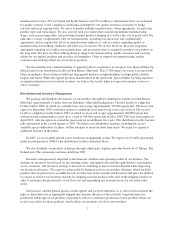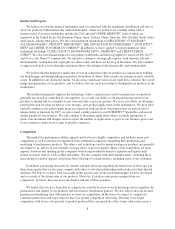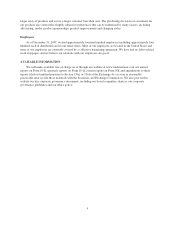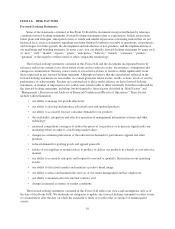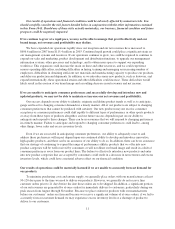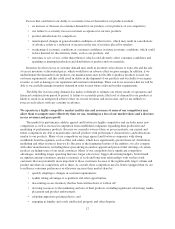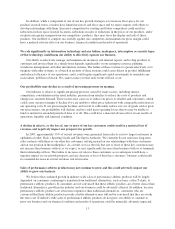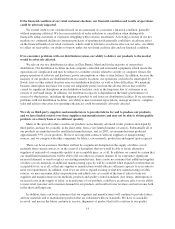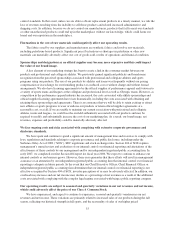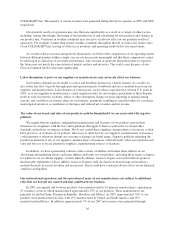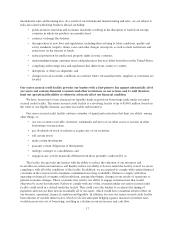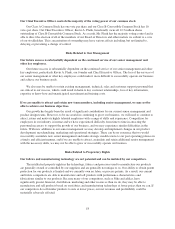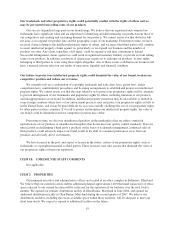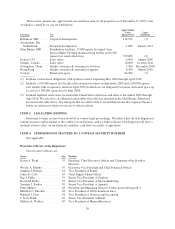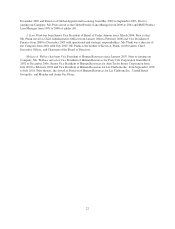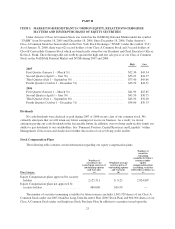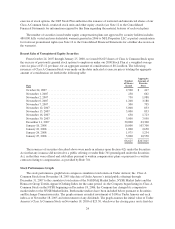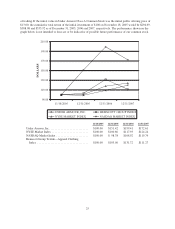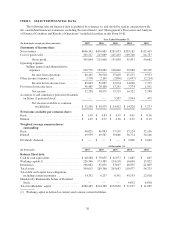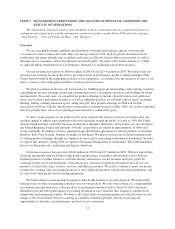Under Armour 2007 Annual Report Download - page 27
Download and view the complete annual report
Please find page 27 of the 2007 Under Armour annual report below. You can navigate through the pages in the report by either clicking on the pages listed below, or by using the keyword search tool below to find specific information within the annual report.international sales and licensing fees. As a result of our international manufacturing and sales, we are subject to
risks associated with doing business abroad, including:
• political unrest, terrorism and economic instability resulting in the disruption of trade from foreign
countries in which our products are manufactured;
• currency exchange fluctuations;
• the imposition of new laws and regulations, including those relating to labor conditions, quality and
safety standards, imports, duties, taxes and other charges on imports, as well as trade restrictions and
restrictions on the transfer of funds;
• reduced protection for intellectual property rights in some countries;
• understanding foreign consumer tastes and preferences that may differ from those in the United States;
• complying with foreign laws and regulations that differ from country to country;
• disruptions or delays in shipments; and
• changes in local economic conditions in countries where our manufacturers, suppliers or customers are
located.
Our senior secured credit facility provides our lenders with a first-priority lien against substantially all of
our assets and contains financial covenants and other restrictions on our actions, and it could therefore
limit our operational flexibility or otherwise adversely affect our financial condition.
We have, from time to time, financed our liquidity needs in part from borrowings made under our senior
secured credit facility. The senior secured credit facility is a revolving facility of up to $100.0 million (based on
the value of our eligible domestic accounts receivable and inventory).
Our senior secured credit facility contains a number of significant restrictions that limit our ability, among
other things, to:
• use our accounts receivable, inventory, trademarks and most of our other assets as security in other
borrowings or transactions;
• pay dividends on stock or redeem or acquire any of our securities;
• sell certain assets;
• make certain investments;
• guaranty certain obligations of third parties;
• undergo a merger or consolidation; and
• engage in any activity materially different from those presently conducted by us.
The facility also provides the lenders with the ability to reduce the valuation of our inventory and
receivables in certain circumstances and thereby reduce our ability to borrow under the facility even if we are in
compliance with all of the conditions of the facility. In addition, we are required to comply with certain financial
covenants in the event we fail to maintain a minimum borrowing availability. Failure to comply with these
operating or financial covenants could result from, among other things, changes in our results of operations or
general economic changes. These covenants may restrict our ability to engage in transactions that would
otherwise be in our best interests. Failure to comply with any of the covenants under our senior secured credit
facility could result in a default under the facility. This could cause the lenders to accelerate the timing of
payments and exercise their lien on essentially all of our assets, which would have a material adverse effect on
our business, operations, financial condition and liquidity. In addition, because our senior secured credit facility
bears interest at variable interest rates, which we do not anticipate hedging against, increases in interest rates
would increase our cost of borrowing, resulting in a decline in our net income and cash flow.
17


